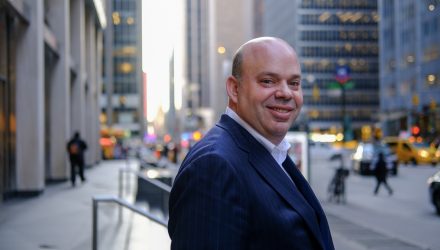Actively managed equity ETFs are gaining traction in 2024. Despite representing 5% of assets, they have pulled in more than 25% of the net inflows this year as of late March.
This month, VettaFi hosted the Equity Symposium for advisors aided by some leading asset managers. We asked many questions of the attendees to understand investment objectives and sentiment.
For example, VettaFi asked “How much of your equity exposure in average client portfolios is in actively managed fund strategies?”
Approximately one-quarter of the responses were from people with less than 10% dedicated to active equities. However, approximately one-third had more than 50% in active. The remainder of the poll responses was between 11% and 50% of client portfolio.
Given the growing supply of actively managed ETFs, VettaFi dove deeper and asked for a follow up. “Which investment style would you consider investing in actively managed ETFs?” With the option to select multiple choices, US small-/mid-caps were the most popular with 76%. International equities (58%), thematic strategies (50%) and US large caps (50%) were also considered appealing to advisors.

Active Small Caps Historically Done Well Vs. Index Approach
In the latest SPIVA Scorecard, 48% of small cap core funds outperformed the S&P Small Cap 600 benchmark in the past three years. Meanwhile, 42% of mid cap core funds outpaced the S&P MidCap 400. These figures are much stronger than the 21% of large caps between 2021 and 2023 that did as investors hoped. For years, fans of active management for small and mid-cap strategies had to turn to mutual funds to tap into the expertise. However, there are now active small/mid cap ETFs to consider too.
For example, the Dimensional US Small Cap ETF (DFAS) and the Avantis US Small Cap Equity ETF (AVSC) are a couple of broadly diversified, yet active ETFs. They also have expense ratios below 0.30%. Both focus on higher quality, low valuation smaller companies. They both recently beat the S&P 600 Index in the past year by over 300 basis points. Neither fund has a three-year track record.
Abercrombie & Fitch, Modine Manufacturing, and Sterling Infrastructure were recently the top positions for AVSC. Meanwhile, Applied Industrial Technologies, Comfort Systems, and Fabrinet were examples of what is inside DFAS. DFAS holds more than 2,000 stocks, while AVSC owns over 1,300.
Taking a More Targeted Small Cap Approach
In contrast, the Fidelity Fundamental Small-Mid Cap ETF (FFSM) and the T Rowe Price Small-Mid Cap ETF (TMSL) own just a couple of hundred stocks each. Meanwhile Goldman Sachs Small Cap Core ETF (GSC) owns just under 100.
FSM holds AutoZone, Molina Healthcare, and Tempur Sealy International. TMSL owns MKS Instruments, Stanley Black & Decker, and Textron. GSC’s positions include Federal Signal, Meritage Homes, and SPX Technologies.
The Fidelity ETF also outperformed the S&P 600 Index in the past year. Goldman Sachs and T. Rowe Price launched their funds in 2023, but they have each gotten off to a strong start in 2024.
While these three targeted ETFs have $100 million in assets, that can be an advantage. Active small-cap mutual funds often are closed to new investors when they gain critical mass. These ETFs do not currently have to worry about that.
For more news, information, and analysis, visit VettaFi | ETF Trends.


